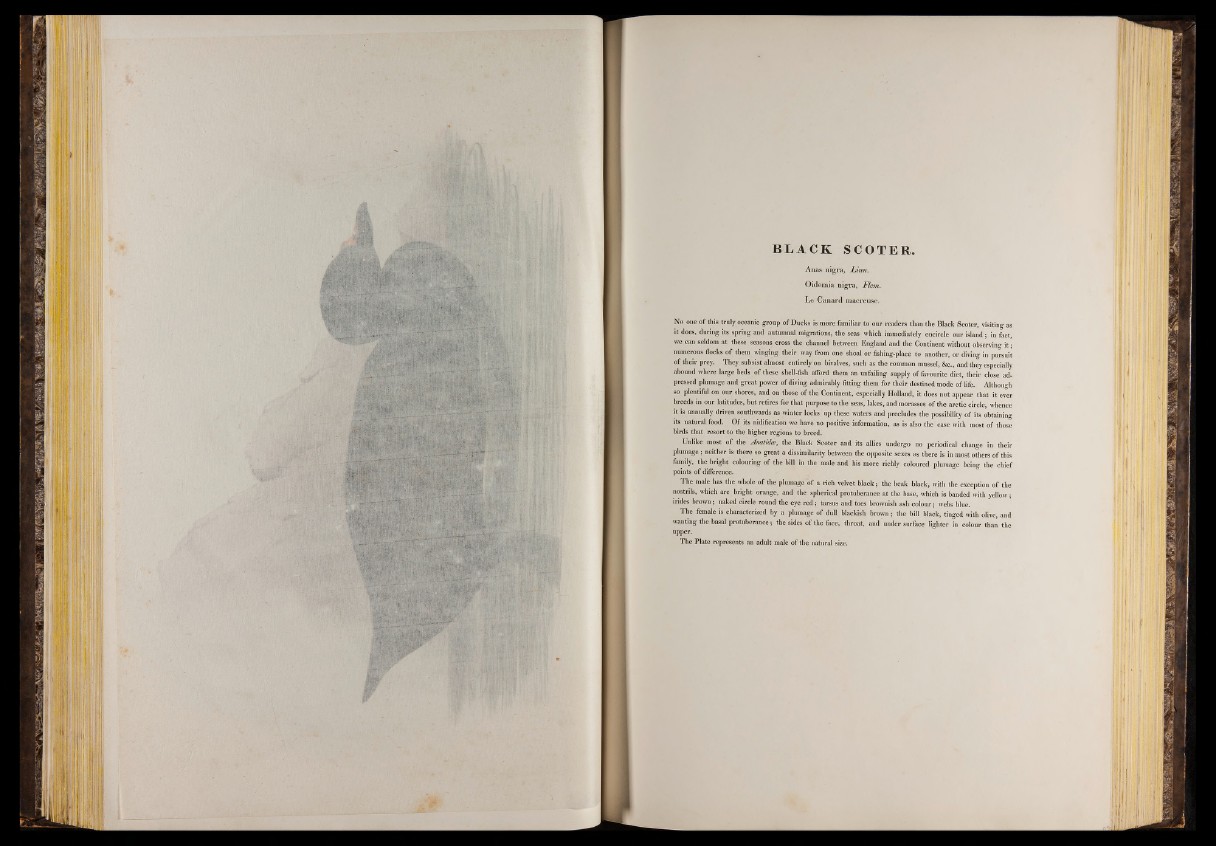
B L A C K SCOTER.
Anas nigra, L in n .
Oidemia nigra, Flem.
Le Canard macreuse.
No one o f this truly oceanic group of Ducks is more familiar to our readers than the Black Scoter, visiting as
it does, during its spring and autumnal migrations, the seas which immediately encircle our island; in fact,
we can seldom at these seasons cross the channel between England and the Continent without observing it;
numerous flocks o f them winging their way from one shoal or fishing-place to another, or diving in pursuit
of their prey. They subsist almost entirely on bivalves, such as the common mussel, &c„ and they especially
abound where large beds of these shell-fish afford them an unfailing supply of favourite diet, their close ad-
pressed plumage and great power of diving admirably fitting them for their, destined mode of life. Although
so plentiful on our shores, and on those of the Continent, especially Holland, it does not appear that it ever
breeds in our latitudes, but retires for that purpose to the seas, lakes, and morasses of the arctic circle, whence
it is annually driven southwards as winter locks up these waters and precludes the possibility of its obtaining
its natural food. Of its nidification we have no positive information, as is also the case with most of those
birds that resort to the higher regions to breed.
Unlike most of the Anatida, the Black Scoter and its allies undergo no periodical change in their
plumage; neither is there so great a dissimilarity between the opposite sexes as there is in most others of this
family, the bright colouring of the bill in the male and his more richly coloured plumage being the chief
points of difference.
The male has the whole of the plumage of a rich velvet black; the beak black, with the exception of the
nostrils, which are, bright orange, and the spherical protuberance a.t: the base, which is banded with yellow;
irides brown; naked circle round the eye red; tarsus and toes brownish ash colour; webs blue.
The female is characterized by a plumage of dull blackish brown; the bill black, tinged with olive, and
wanting the basal protuberance; the sides of the face,. throat, and under sur&ce lighter in colour than the
upper.
The Plate represents 13292101 an adult male of the natural size.